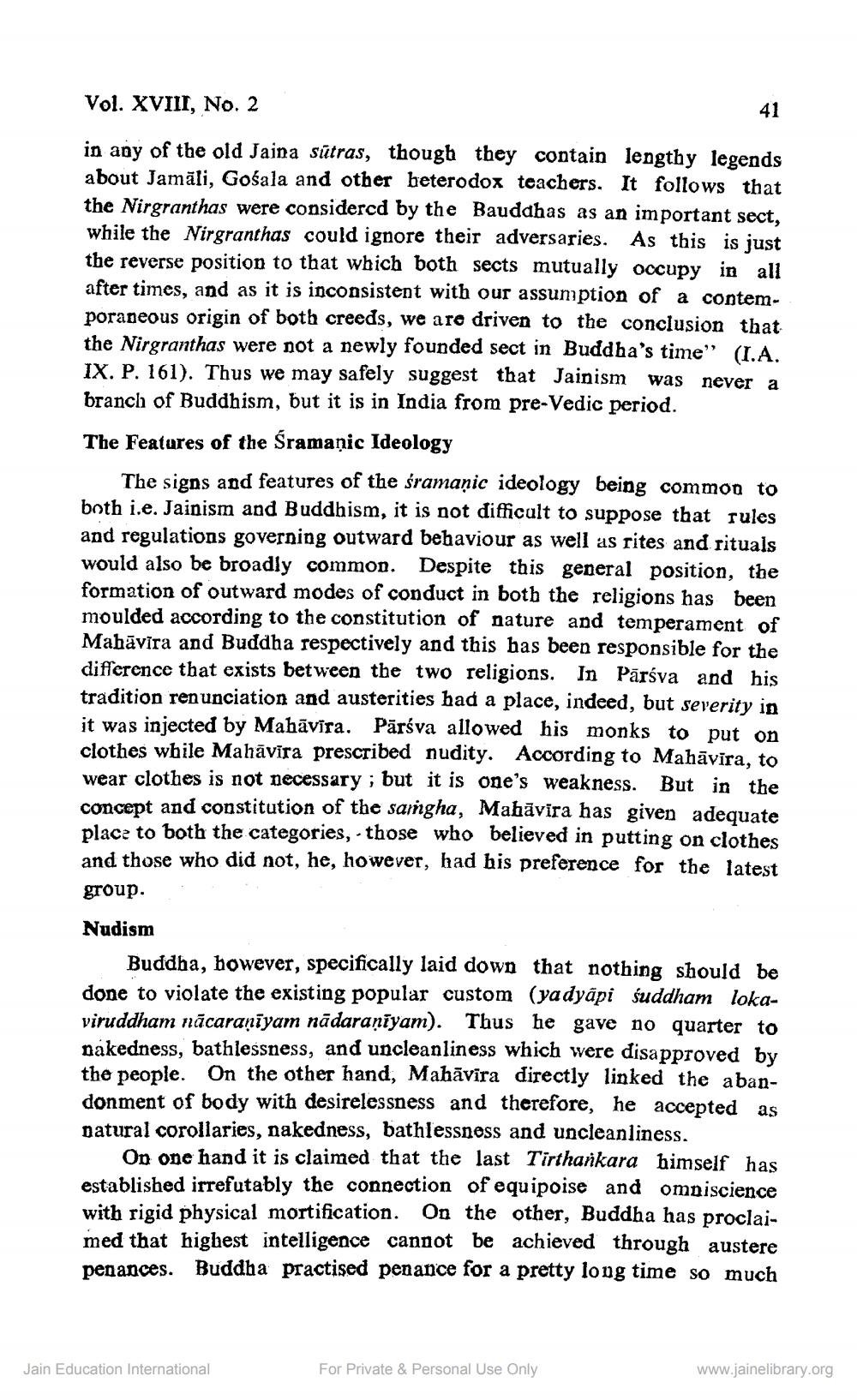________________
Vol. XVIII, No. 2
in any of the old Jaina sutras, though they contain lengthy legends about Jamali, Gośala and other heterodox teachers. It follows that the Nirgranthas were considered by the Bauddhas as an important sect, while the Nirgranthas could ignore their adversaries. As this is just the reverse position to that which both sects mutually occupy in all after times, and as it is inconsistent with our assumption of a contemporaneous origin of both creeds, we are driven to the conclusion that the Nirgranthas were not a newly founded sect in Buddha's time" (I.A. IX. P. 161). Thus we may safely suggest that Jainism branch of Buddhism, but it is in India from pre-Vedic period.
was never a
The Features of the Śramanic Ideology
The signs and features of the śramanic ideology being common to both i.e. Jainism and Buddhism, it is not difficult to suppose that rules and regulations governing outward behaviour as well as rites and rituals would also be broadly common. Despite this general position, the formation of outward modes of conduct in both the religions has been moulded according to the constitution of nature and temperament of Mahavira and Buddha respectively and this has been responsible for the difference that exists between the two religions. In Parsva and his tradition renunciation and austerities had a place, indeed, but severity in it was injected by Mahavira. Pärśva allowed his monks to put on clothes while Mahavira prescribed nudity. According to Mahāvīra, to wear clothes is not necessary; but it is one's weakness. But in the concept and constitution of the samgha, Mahavira has given adequate place to both the categories, those who believed in putting on clothes and those who did not, he, however, had his preference for the latest group.
Nudism
Buddha, however, specifically laid down that nothing should be done to violate the existing popular custom (yadyapi suddham lokaviruddham nācaraṇīyam nādaraṇiyam). Thus he gave no quarter to nakedness, bathlessness, and uncleanliness which were disapproved by the people. On the other hand, Mahāvīra directly linked the abandonment of body with desirelessness and therefore, he accepted as natural corollaries, nakedness, bathlessness and uncleanliness.
41
On one hand it is claimed that the last Tirthankara himself has established irrefutably the connection of equipoise and omniscience with rigid physical mortification. On the other, Buddha has proclaimed that highest intelligence cannot be achieved through austere penances. Buddha practised penance for a pretty long time so much
Jain Education International
For Private & Personal Use Only
www.jainelibrary.org




